The Korean Expedition of 1871
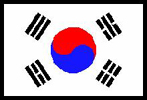
The Korean Expedition of 1871
In 1866, the General Sherman, an armed merchant marine side-wheel steamer, sailed into Korean waters and was never heard from again. Its disappearance was rooted in mystery and speculation. In reality, as early as 1868, Korean officials acknowledged that the General Sherman had been sunk and the crew killed for ignoring the Korean ban on foreigners and in effect violating Korean sovereignty. One of several explanations had the ship destroyed on the Tae-dong River. The Korean Kingdom’s adversity to foreigners would set the stage for the US Korean Expedition to follow in another five years.
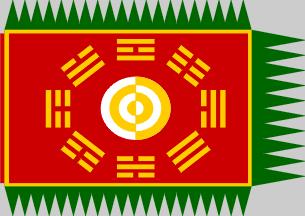
The Earliest Known Flag of the Kingdom of Korea
The Korean Expedition of 1871 was the first American post Civil War military action as a reunified country
in Asia. The Expedition took place on and in the vicinity of the Korean island of Ganghwa (Kanghwa).
An American naval force of 650 men (500+ sailors and 100 Marines) and five war ships: USS Colorado, USS Alaska, USS Palos, USS Monocacy and USS Benica under the command of Rear Admiral John Rodgers had shown up in support of a futile attempt by US Ambassador to China, Frederick F. Low, who was onboard the USS Colorado, to negotiate a trade treaty with Korea. The U.S. naval force would ultimately unleash a punishing attack on the natives for depredations on Americans, particularly for murdering the crew of the General Sherman and burning the ship, and later for firing on American boats taking soundings on the Salee River.
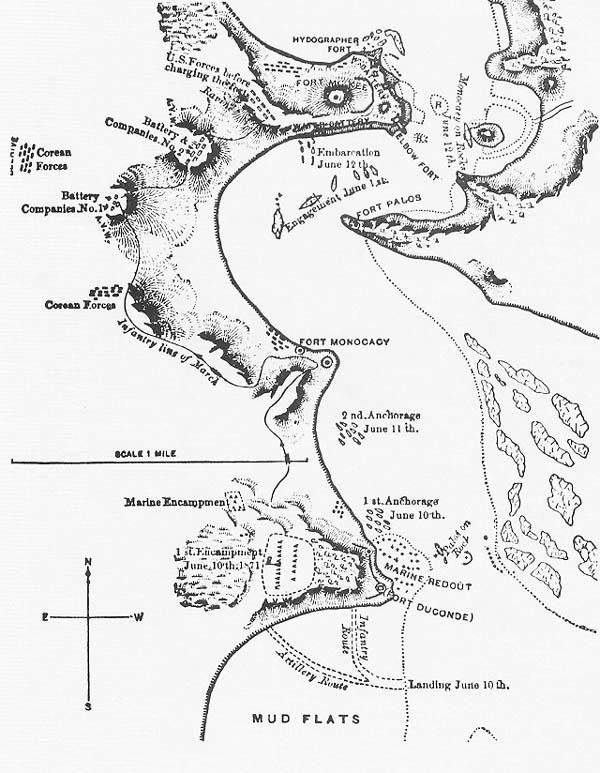
Ganghwa (Kanghwa) Island
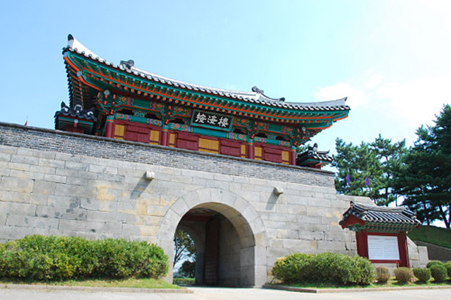
Gwangeong Fortress (the Citadel) Anhaeru Gate
After the American boats taking soundings on the Salee River were fired upon by Korean shore batteries,
on June 10, 1871, the American task force attacked the Choji Garrison on the Salee River. After quickly
overrunning the fort, they next attacked the Deokjin Garrison and then the abandoned Deokjin Fort.
Their ultimate objective was the Gwangeong Fortress or Citadel as the Americans called it, where the
out-gunned Korean forces had regrouped under the command of General Eo Uh Je-yeon.
Following a heavy American bombardment of the Citadel, the American forces led by Lt. Hugh McKee, one of three Americans killed-in-action, charged the fortress. When the battle was over, the Americans had captured the battle flag of General Eo Uh Je-yeon, who was also killed during the action, at a cost of 248 Koreans and three Americans killed in action. A fourth American fatality was subsequently attributed to disease. Following the action (June 10-12, 1871), the US Asiatic Squadron remained at anchor off Jakyak Island until July 3, 1871 when it eventually returned to Chinese waters.
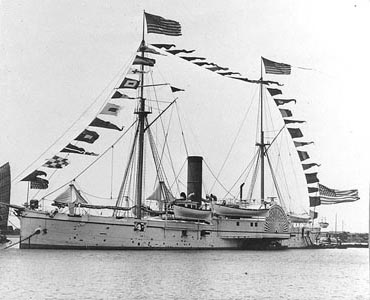
USS Monocacy
The United States was not able to achieve its diplomatic objective, as the Koreans steadfastly refused
to negotiate a treaty. In fact, the events of 1871 led the Regent of Joseon, Heungseon Daewongun, to strengthen
his policy of isolation and issue a national proclamation against appeasing foreigners.
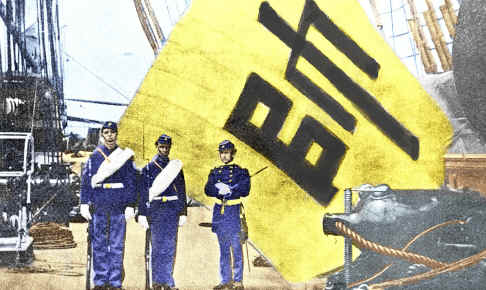
The Captured Battle Flag, Called Sujagi, of General Eo Uh Je-yeon Onboard the USS Colorado.
In 1876, Korea eventually established a treaty with Japan after Japanese warships threatened to fire
on Seoul. Treaties with European countries and the U.S. soon followed.
From April to May 1882, the United States and Korea eventually negotiated and approved a 14 article Treaty of Amity and Commerce. The treaty established mutual friendship and mutual assistance in case of attack. The treaty also addressed extraterritorial rights for American citizens in Korea and most favored nation trade status. The treaty remained in effect until the eventual annexation of Korea by Japan in 1910. Marines would return in 1888 and again in 1904-5 to protect American interests during periods of unrest.
Nine sailors and six Marines were awarded the Medal of Honor, the first for actions in a foreign conflict. At the time of the expedition, only enlisted men were eligible to receive the medal.
U.S. Navy Recipients
ANDREWS, JOHN, Ordinary Seaman, U.S. Navy, USS Benicia
FRANKLIN, FREDERICK, Quartermaster, U.S. Navy, USS Colorado
GRACE, PATRICK H., Chief Quartermaster, U.S. Navy, USS Benicia
HAYDEN, CYRUS, Carpenter, U.S. Navy, USS Colorado
LUKES, WILLIAM F., Landsman, U.S. Navy
Mc KENZlE, ALEXANDER, Boatswain's Mate, U.S. Navy, USS Colorado
MERTON, JAMES F., Landsman, U.S. Navy
ROGERS, SAMUEL F., Quartermaster, U.S. Navy, USS Colorado
TROY, WILLIAM, Ordinary Seaman, U.S. Navy, USS Colorado
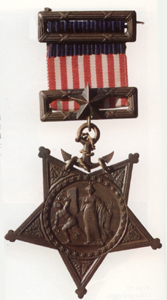
US Navy and Marine Corps Medal of Honor Type 1 With Fouled Anchor
U.S. Marine Corps Recipients
BROWN, CHARLES, Corporal, U.S. Marine Corps, USS Colorado
COLEMAN, JOHN, Private, U.S. Marine Corps, USS Colorado
DOUGHERTY, JAMES*, Private, U.S. Marine Corps, USS Benicia
McNAMARA, MICHAEL, Private, U.S. Marine Corps, USS Benicia
OWENS, MICHAEL, Private, U.S. Marine Corps, USS Colorado
PURVIS, HUGH, Private, U.S. Marine Corps, USS Alaska
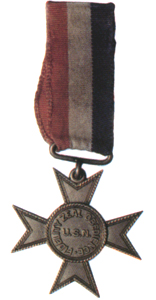
USN Good Conduct Badge – the Only Other US Medal at the Time
*Note: James Dougherty awarded the Medal of Honor during the Korean Expedition is listed as
serving aboard the iron clad, USS Carondelet, which was decommissioned in June 1865 and sold
in November 1865 well before the Korean Expedition in 1871. Records indicate a Marine Private
James Dougherty serving on the USS Benicia. It appears that the citation for Private Dougherty's
medal referred incorrectly to the USS Carondelet instead of to the USS Benicia, which was
definitely involved in the Korean Expedition of 1871.
References
http://www.homeofheroes.com/wallofhonor/korea1871/1_preface.html
www.shinmiyangyo.org

The Korean Expedition of 1871
In 1866, the General Sherman, an armed merchant marine side-wheel steamer, sailed into Korean waters and was never heard from again. Its disappearance was rooted in mystery and speculation. In reality, as early as 1868, Korean officials acknowledged that the General Sherman had been sunk and the crew killed for ignoring the Korean ban on foreigners and in effect violating Korean sovereignty. One of several explanations had the ship destroyed on the Tae-dong River. The Korean Kingdom’s adversity to foreigners would set the stage for the US Korean Expedition to follow in another five years.

The Earliest Known Flag of the Kingdom of Korea
An American naval force of 650 men (500+ sailors and 100 Marines) and five war ships: USS Colorado, USS Alaska, USS Palos, USS Monocacy and USS Benica under the command of Rear Admiral John Rodgers had shown up in support of a futile attempt by US Ambassador to China, Frederick F. Low, who was onboard the USS Colorado, to negotiate a trade treaty with Korea. The U.S. naval force would ultimately unleash a punishing attack on the natives for depredations on Americans, particularly for murdering the crew of the General Sherman and burning the ship, and later for firing on American boats taking soundings on the Salee River.

Ganghwa (Kanghwa) Island

Gwangeong Fortress (the Citadel) Anhaeru Gate
Following a heavy American bombardment of the Citadel, the American forces led by Lt. Hugh McKee, one of three Americans killed-in-action, charged the fortress. When the battle was over, the Americans had captured the battle flag of General Eo Uh Je-yeon, who was also killed during the action, at a cost of 248 Koreans and three Americans killed in action. A fourth American fatality was subsequently attributed to disease. Following the action (June 10-12, 1871), the US Asiatic Squadron remained at anchor off Jakyak Island until July 3, 1871 when it eventually returned to Chinese waters.

USS Monocacy

The Captured Battle Flag, Called Sujagi, of General Eo Uh Je-yeon Onboard the USS Colorado.
From April to May 1882, the United States and Korea eventually negotiated and approved a 14 article Treaty of Amity and Commerce. The treaty established mutual friendship and mutual assistance in case of attack. The treaty also addressed extraterritorial rights for American citizens in Korea and most favored nation trade status. The treaty remained in effect until the eventual annexation of Korea by Japan in 1910. Marines would return in 1888 and again in 1904-5 to protect American interests during periods of unrest.
Nine sailors and six Marines were awarded the Medal of Honor, the first for actions in a foreign conflict. At the time of the expedition, only enlisted men were eligible to receive the medal.
U.S. Navy Recipients
ANDREWS, JOHN, Ordinary Seaman, U.S. Navy, USS Benicia
FRANKLIN, FREDERICK, Quartermaster, U.S. Navy, USS Colorado
GRACE, PATRICK H., Chief Quartermaster, U.S. Navy, USS Benicia
HAYDEN, CYRUS, Carpenter, U.S. Navy, USS Colorado
LUKES, WILLIAM F., Landsman, U.S. Navy
Mc KENZlE, ALEXANDER, Boatswain's Mate, U.S. Navy, USS Colorado
MERTON, JAMES F., Landsman, U.S. Navy
ROGERS, SAMUEL F., Quartermaster, U.S. Navy, USS Colorado
TROY, WILLIAM, Ordinary Seaman, U.S. Navy, USS Colorado

US Navy and Marine Corps Medal of Honor Type 1 With Fouled Anchor
BROWN, CHARLES, Corporal, U.S. Marine Corps, USS Colorado
COLEMAN, JOHN, Private, U.S. Marine Corps, USS Colorado
DOUGHERTY, JAMES*, Private, U.S. Marine Corps, USS Benicia
McNAMARA, MICHAEL, Private, U.S. Marine Corps, USS Benicia
OWENS, MICHAEL, Private, U.S. Marine Corps, USS Colorado
PURVIS, HUGH, Private, U.S. Marine Corps, USS Alaska

USN Good Conduct Badge – the Only Other US Medal at the Time
References
http://www.homeofheroes.com/wallofhonor/korea1871/1_preface.html
www.shinmiyangyo.org
Website Maintained by Vaudezilla